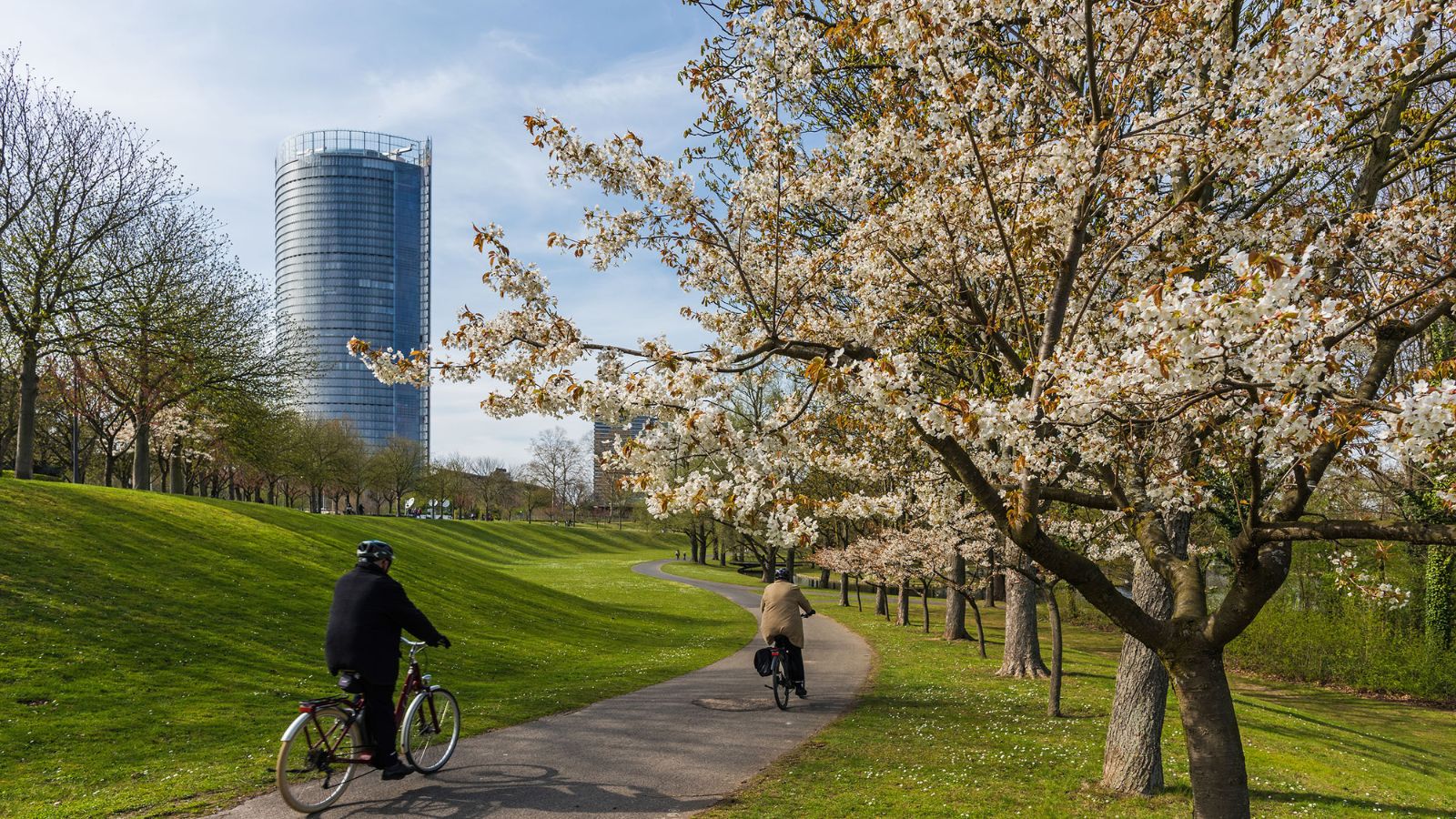Put mental health at the heart of city decisions: A call to action for World Mental Health Day
Mental health is central to healthy, resilient cities. On 10 October, the United Nations’ World Mental Health Day, is a reminder that urban environments, climate resilience, and social connections profoundly shape well-being, and that local governments play a critical role in safeguarding it.
* This article is co-authored by Dr. Heidi Albert, Head of the ICLEI Cities Health Unit, and Dr. Gary Belkin, Director of the Billion Minds Institute.
World Mental Health Day reminds us of a simple truth: There is no health without mental health. More than one billion people, nearly one in eight, live with a mental disorder, most commonly anxiety and depression, which are projected to become the leading cause of global morbidity by 2030. Behind these figures are friends, colleagues, neighbors, children, and parents navigating environments that can support or undermine well-being.
Mental illness can limit education, income, social status, and housing, deepening marginalization. Yet despite the scale of the problem, and the availability of cost-effective treatments, most people remain undiagnosed and untreated: 76–85% in low- and middle-income countries and 35–50% in high-income countries. Barriers include limited services, workforce shortages, stigma, and poor access to services. The cost of inaction is enormous: Depression and anxiety alone cost the global economy US$1 trillion annually in lost productivity, rising to a projected US$16 trillion by 2030.
Why mental health in cities matters
Cities are not only economically vibrant but also places where people live, work, and socialize. They offer opportunity, yet also bring unique stressors: Noise, overcrowding, pollution, insecure work, and unequal access to housing, food, and green space. Social isolation is widespread — it is possible to feel most alone when surrounded by millions. Mental health risks intensify where communities are fragmented, public services fall short, and poverty leaves little room to cope with stress. Youth and older adults are particularly vulnerable.
For instance, as in many parts of the world, the United States faces these challenges, with similar patterns evident across communities. Half of all mental health conditions begin by age 14, yet most go undetected and untreated. Older adults often face loneliness, grief, and reduced independence, all of which undermine well-being. Intergenerational connections, through families, neighborhood groups or mentorship, can reduce isolation and build resilience.
Cities are also particularly well-positioned to foster the mutually reinforcing connections between social capital, social ties, agency, and mental health and well-being.
Psychological resilience and climate change
Mental well-being is deeply affected by the climate crisis. Extreme heat, flooding, drought, and displacement take a toll on psychological well-being, contributing to “eco-anxiety” and trauma. Children and youth face anxiety about an uncertain future, while communities already struggling with poverty or conflict experience compounded stress.
A community’s psychological resilience is a critical asset for confronting these climate-related challenges. It thrives when collective strategies complement and reinforce individual coping mechanisms. Social networks, neighborhood support systems, and safe green spaces strengthen these mechanisms, helping people adapt not only to climate impacts but also to everyday stress.
Local governments, with their deep understanding of neighborhoods, cross-sectoral experience, and trusted relationship with residents, are well-positioned to foster this resilience. Evidence-based, practical guidance exists for integrating mental health tools and skills into the hands of non-professionals, enabling communities to benefit even where professional support is limited.
Local governments can leverage existing capacities, including community health workers, NGOs, and informal support networks, to deliver culturally and locally relevant interventions that protect and enhance communal mental health. Climate adaptation plans and strategies provide an ideal platform for implementing such approaches, particularly in highly impacted areas where communities are mobilized to respond to climate challenges.
Investing in mental health is both a social and economic imperative. Every US$1 invested in scaling up treatment for depression and anxiety yields a return of US$4 through improved health and productivity. Broader interventions that strengthen social cohesion and reduce vulnerability to climate shocks can also generate long-term savings in healthcare costs, lost productivity, and disaster recovery.
Nature as a protective factor
Spending time in nature benefits stress reduction, mood and cognitive health (8). Urban parks and community gardens offer more than environmental services; they support mental health. Even brief visits to green spaces can lower anxiety, reduce loneliness and boost physical activity.
This is especially important in densely populated cities where many people live in small or crowded homes. Access to safe outdoor spaces can mean the difference between isolation and connection. In many cultures, nature is intertwined with spiritual and communal practices, offering culturally rooted healing. Recognizing these traditions alongside scientific evidence allows cities to design interventions that resonate across diverse populations.
Moreover, nature-based (or green) social prescribing and nature-based or ecotherapies are being incorporated in the management of loneliness and mental illnesses to improve mental health outcomes, reduce inequalities and reduce demand on the health and social care system. Initiatives across Europe, Australia and Japan are pioneering research, policy and practice in this field.
Culture, stigma and agency
How societies perceive mental health shapes outcomes. Stigma prevents people from seeking care, yet cultures also carry resilience tools, such as collective rituals, community-led care networks, and shared coping practices. Elevating these strengths while tackling stigma is essential.
Equally important is agency. People are not passive recipients of services; they are experts in their own experience. Youth-led movements, older adults’ associations, and grassroots groups demonstrate that those closest to the issue often know best how to respond. Supporting and resourcing this agency ensures strategies are relevant, inclusive, and sustainable.
Towards a multi-sector response
No single sector can solve the mental health crisis. Schools, workplaces, housing departments, transport planners, health ministries and community organizations all shape environments that support or undermine mental health.
Practical examples of support include:
- Schools integrating life skills and mental health literacy early.
- Employers creating supportive work environments that reduce stress.
- Urban planners designing neighborhoods with safe public spaces and green areas.
- Health systems integrating mental health into primary care using community health worker networks.
- Community organizations providing culturally grounded, accessible services and support networks.
This multi-sector approach bridges treatment gaps and tackles root causes, from inequality to unsafe environments. Leveraging local capacity and ensuring meaningful community engagement are critical for success.
A call for connection and action
Mental health affects all countries, classes, and generations. Solutions must be context-specific, culturally appropriate, and rooted in daily life. The cost of inaction is too high, both in human suffering and economic loss.
This World Mental Health Day, let’s see mental health as a thread running through climate action, social policy and urban development. Let’s value intergenerational connections, draw on the restorative power of nature, and build psychological resilience into city growth.
Most importantly, let’s place people — their voices, agency and lived experiences — at the heart of solutions. Building mentally healthy cities is not just about reducing illness; it’s about protecting futures, strengthening communities and creating places where everyone can thrive.
*About the authors:
- Dr. Heidi Albert, Head, ICLEI Cities Health Unit, based at the ICLEI Cities Biodiversity Center, Cape Town, South Africa: Dr Albert is a global health leader with over 25 years of experience, predominantly in Africa and Asia. As Head of the ICLEI Cities Health Unit, she works collaboratively to address holistic determinants of health and well-being, recognizing the interconnectedness of human, animal, and environmental health in the urban environment.
- Dr. Gary Belkin, Director, Billion Minds Institute, New York, USA: Formerly Deputy Health Commissioner for New York City, Dr. Belkin founded Billion Minds Institute to bring policy and practical attention and change for taking on the social climate crisis of the climate crisis.





